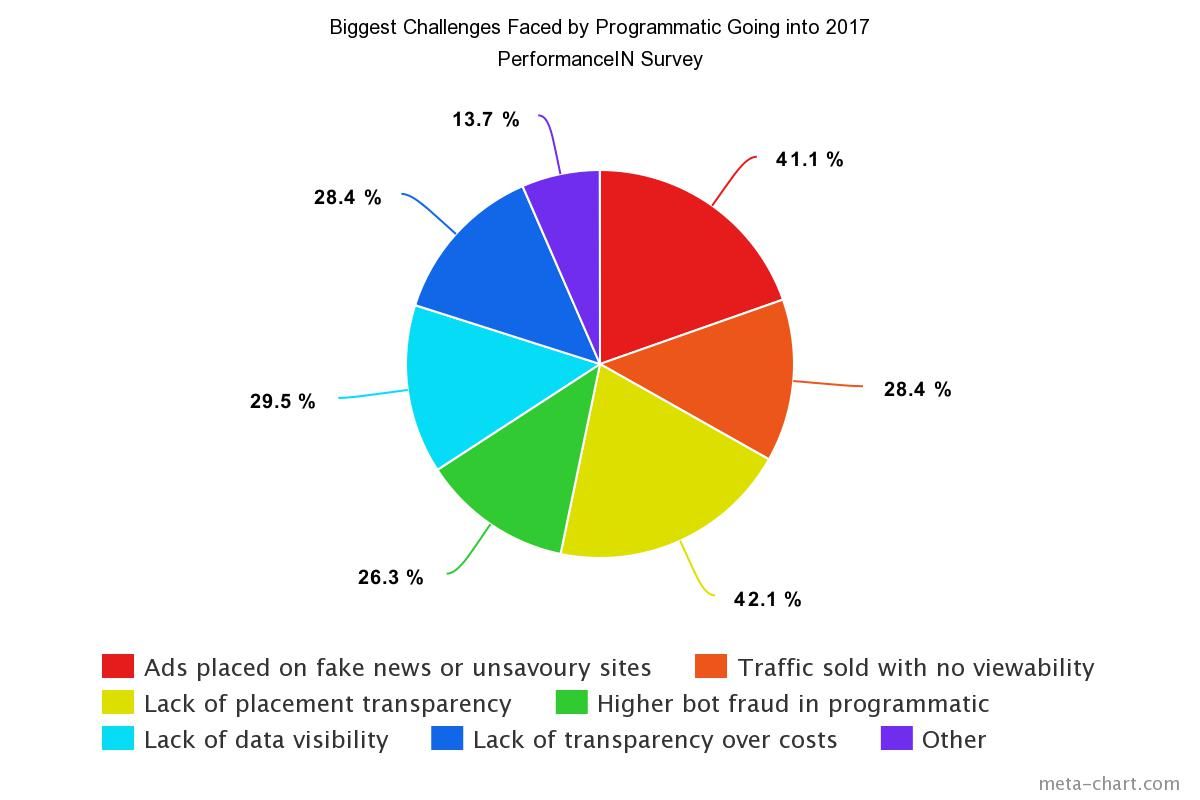As the curtain begins to fall on 2016, it’s plain to see that for another year, adoption of programmatic advertising is showing very little sign of levelling off.
On the contrary, a study by Zenith heralded spend to rise 31% next year, outstripping all other channels in the growth stakes, while playing an even bigger role in the buying process of these other methods of advertising. In fact, you’d be hard-pressed to find statistical evidence not backing a tidal shift towards automated display ad buying, and this in itself is enough to say it’s working.
Despite this, the programmatic buying industry still carries a brace of challenges as it enters the new year, manifested in concerns regarding transparency, brand safety, bot fraud, data use and viewability.
Most recently, however, concerns over automated buying’s aptitude at judging the quality of websites it works with have been conflagrated by the extensive media coverage of ‘fake news’ sites, following their supposed role in influencing the US election results.
Sensing it was time to run a redux to a poll we ran earlier in the year, PerformanceIN asked 100 of our audience of performance marketers what they consider to be the key challenges faced by programmatic as it rolls into 2017. The findings can be found below.
Ad placement worries
While not quite topping that of general ad placement transparency, concerns over fake news sites did indeed rank as a key point for improvement among a large portion of those surveyed (41.1%), providing comment for MainAd’s head of sales, Matt Keating.
“Brand safety is not a new concern, but political events in 2016 have certainly thrust the term ‘fake news’ into the spotlight, and we need to apply greater scrutiny to our traffic sources in order to counter it.”
The issue, said Victoria Swainson, 1XL’s head of programmatic, is that these types of publishers are “difficult to identify” automatically at an article – or impression – level.
Companies instead must rely on creating blacklists, said Sociomantic’s UK commercial director, Greg Endean, while adding pressure and tech provision to ad exchanges and SSPs to disable the ability of these sites to anonymize their traffic.
While fake news sites attracted the wrong kind of attention for programmatic at the tail-end of the year, the results show a more deep-seated issue; a general lack of ad placement transparency. This topped the list of pain-points, garnering some 42.1% of votes.
Unlike TV advertising, where there is a clear contextual difference to advertising depending on content, Voluum’s global managing director, Gavin Stiratt, claimed there is “no similar mechanism” in programmatic to ensure that brands are appearing beside content which they are comfortable with.
Lack of trust
While each of the issues presented in the survey can be whittled down to base lack of transparency, behind ad placement, there are a few other particular areas of note in which advertisers are demanding more visibility.
That includes how much they should be spending, with 28.4% of those surveyed citing ‘lack of transparency over costs’ to be a major challenge, of equal concern as that of traffic sold with no viewability (28.4%).
However, both of these were topped by ‘lack of data visibility’ (29.5%), again suggesting that many advertisers are in the belief that they are being misinformed of the results of their spend, or are not receiving sufficient information in which to confidently base budget decisions.
For Swainson, this underlines the benefit of building direct relationships with media owners, rather than buying through open marketplaces.
“As publishers are more willing to share information such as first party data and placement IDs through PMPs or programmatic guaranteed; directly, fraud is minimised or eliminated, and viewability is superior.”
Let us know your thoughts on the results by tweeting @PerformanceIN


